Reports of a massive change to the design of local search results in the serps started to surface around August 6th worldwide. Of course I was at a family reunion in the mountains of Idaho….

So I came home to the usual social media storm that usually happens when I go off grid. Some are declaring it the end of the world, some (including me) thinks this is a foreshadow of a wider movement for google to start monetizing most local packs, and others are still trying to figure out what the little ballon thingy’s are:
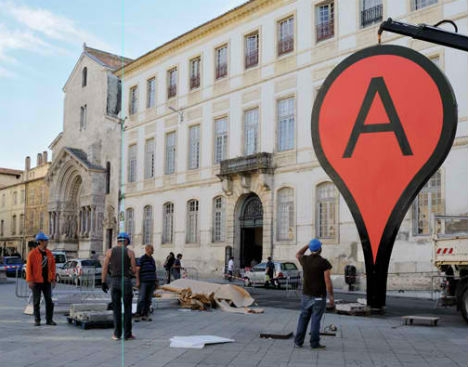
The Click Through Study
Enough with the intro. Let’s dive in. When changes happen I like to run whatever tests I can to understand the effects. While these click through rate studies don’t represent every search phrase, they sure do give us some interesting things to think about. For each of these we asked 100 individuals a variation of the following question:
“Pretend you needed an (industry) in (location). On a (Desktop/mobile device) you searched for “(Google Search Phrase)” and got the following search result. What listing, result, or option would you click/touch on next?”
1. Boise Injury Lawyer – Desktop
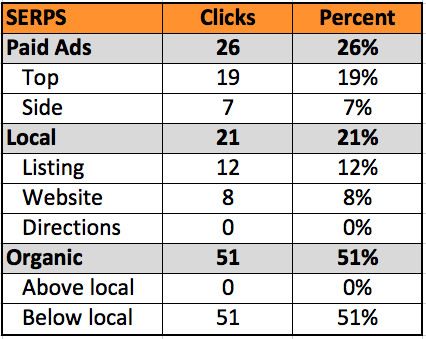
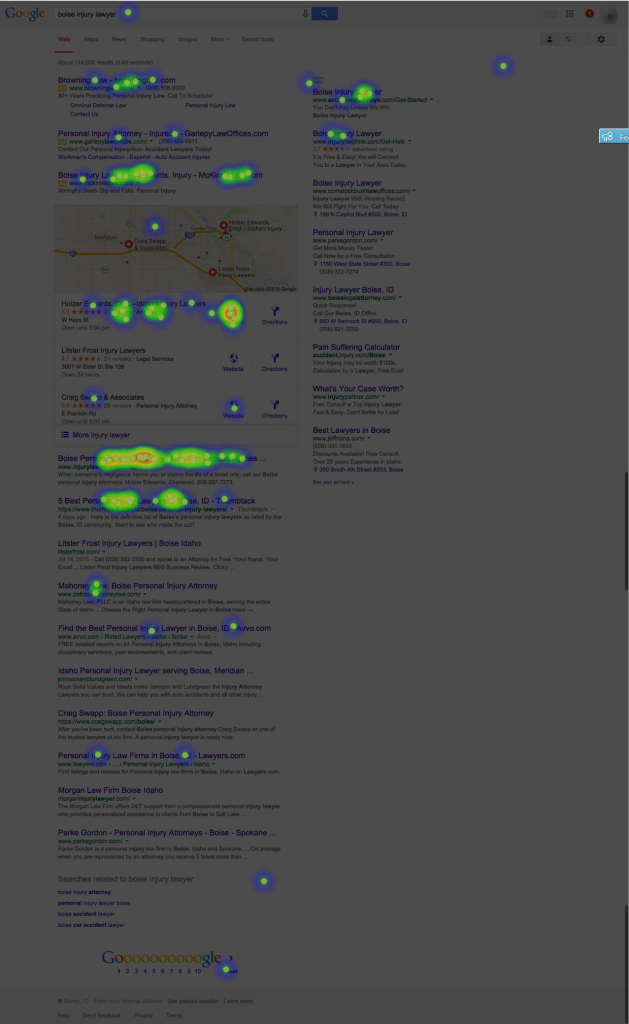
2. Boise Injury Lawyer – Mobile
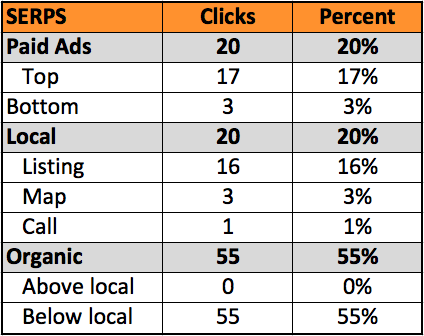

3. Provo Storage Units – Desktop


4. Provo Storage Units – Mobile
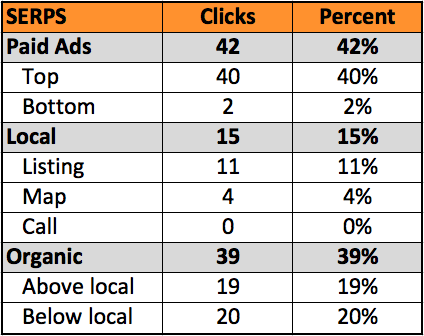
5. Bonus – Sponsored San Fransisco Locksmith – Desktop
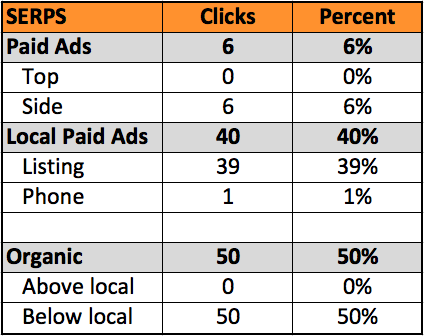
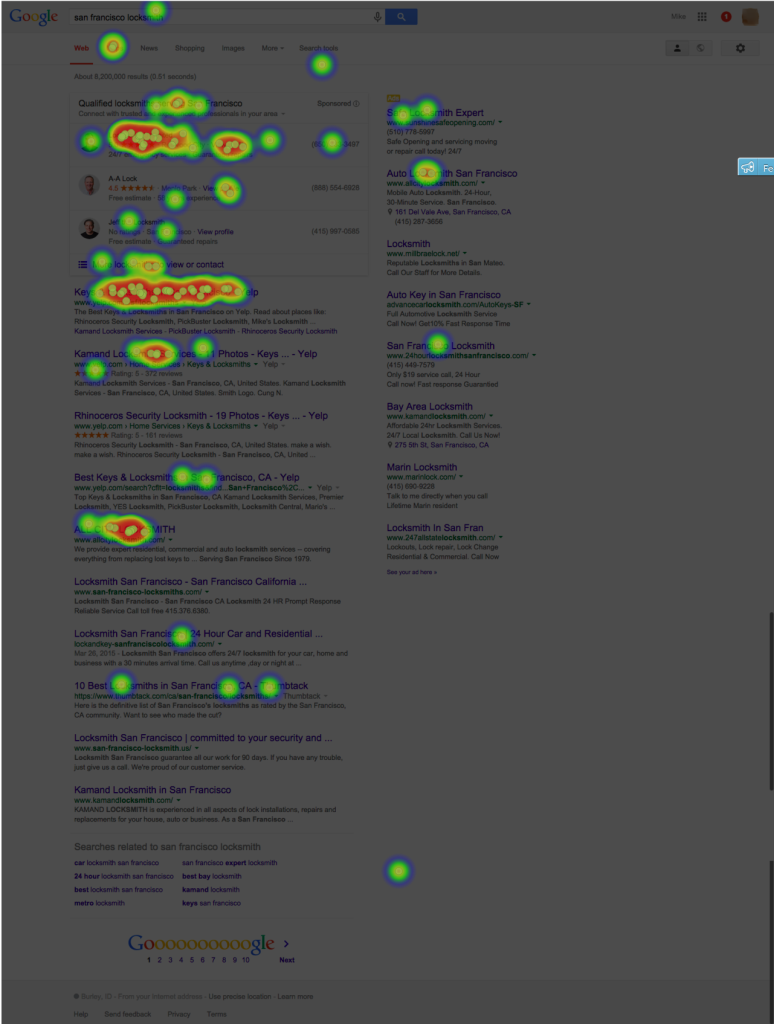
Overall Numbers
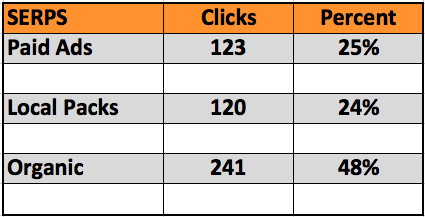
Desktop Numbers (excluding crazy San Fran Sponsored pack)
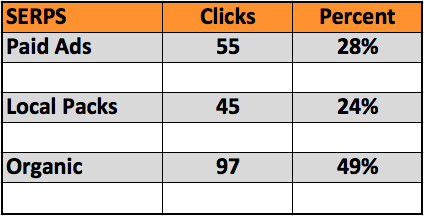
Mobile Numbers
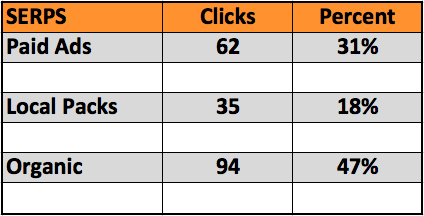
My Thoughts
Organic should be the main focus and Google just can’t kill it.
I started doing these click through studies a long time ago and every time i have ran tests organic results always outperform my expectations. At Nifty, we moved away from a laser focus on maps and really focused on growing organic traffic for phrases that show map results and phrases that don’t and overall we have had great increases of traffic across clients. Local packs change so often that I think its a fools errand to chase them as the end all be all and have been saying that for a while. If you don’t have a local organic strategy you are missing the water, let alone the boat.
Not all seo’s: 🙂 SEOs believe ‘high’ local rankings deliver greater response than organic – https://t.co/bpD51JEfzD via @bright_local
— Mike Ramsey (@MikeRamsey) July 30, 2015
Free Local listings are going to drive a lot less website traffic and phone calls.
Another interesting display change with the new local pack is what happens when people click on a local listing (which made up a majority of the local clicks in our study) compared to the website link or driving directions.
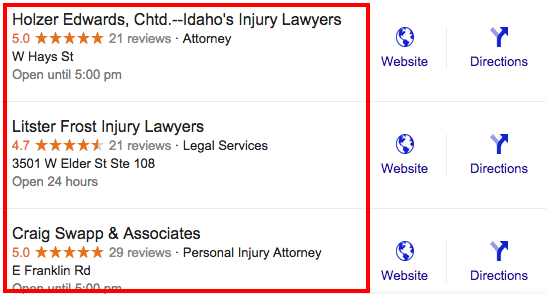
You get this…
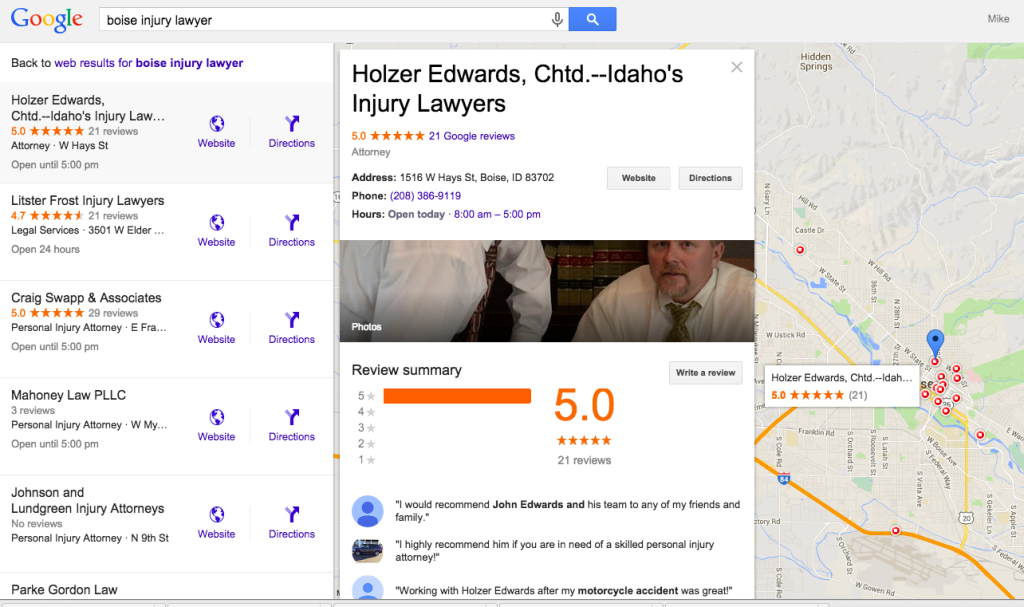
A new improved business listing layout called the local finder which does a great job of showing your competition and highlighting everyone’s reviews. A grey button is the only way to get to the website from this page.The phone number and address are no longer visible from the local pack in the serps and are somewhat minimized on this page. Meanwhile, Google’s sponsored local listing pack (received the most total paid clicks out of all our tests) which showcases the phone number…

Takes you this page…
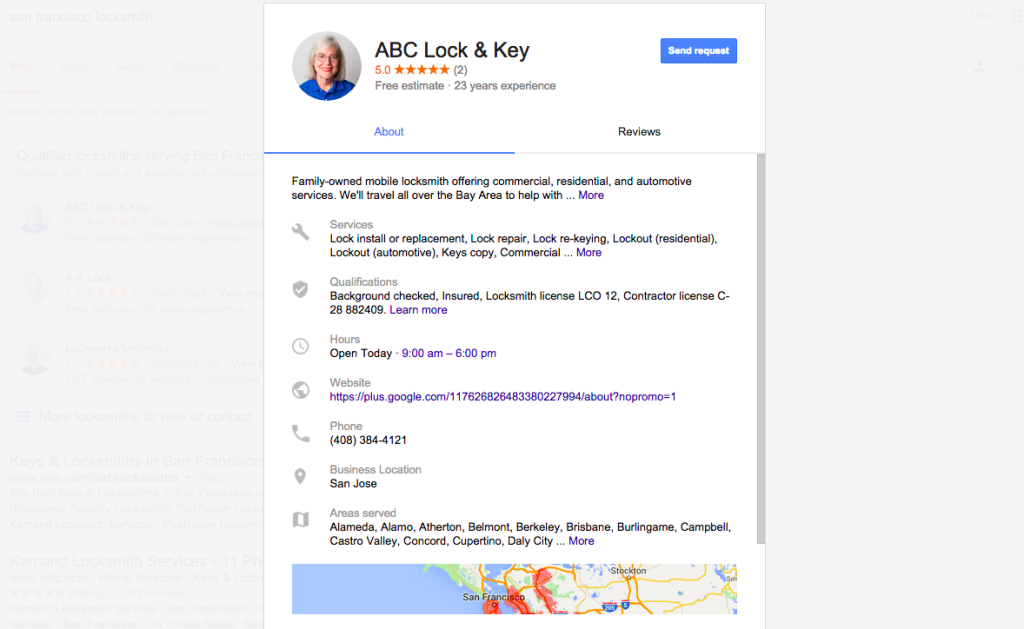
Which minimizes individual reviews compared to aggregate score and also removes those pesky competitors.
My bet is that some version of this is going to roll out across a whole lot more than locksmiths and plumbers. And if a business has the choice to pay google to remove competitors, hide individual reviews, and potentially guarantee a top map position then I think Google is going to make a lot of money.
Every Review Matters
Check out this local finder listing page:
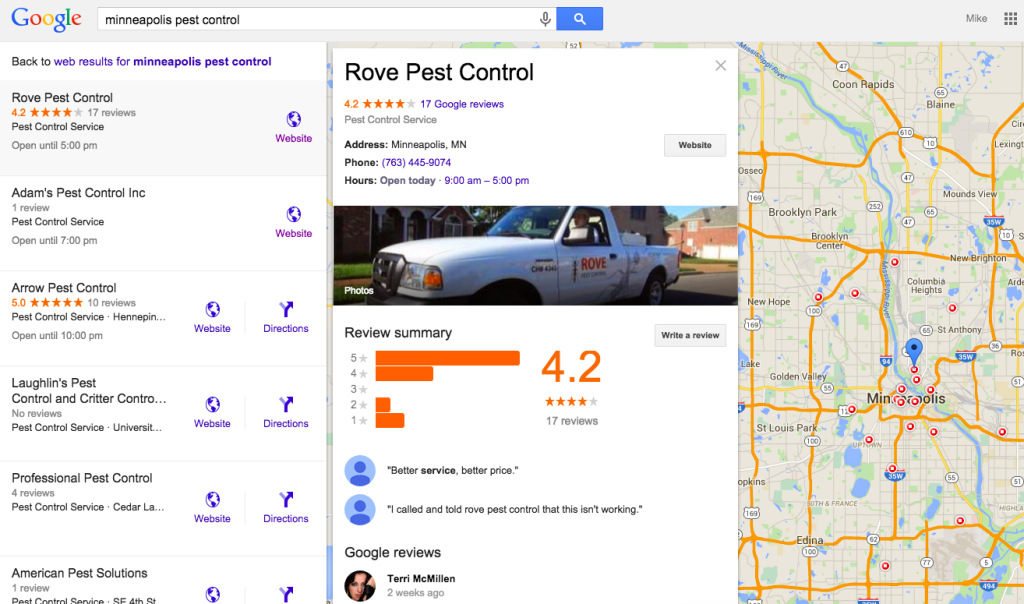
You can see a break down review summary and some reviews are highlighted. Rove has a 4.2 rating (greaet) but it’s obvious they have a couple 2 and 1 star reviews along with a highlighted negative phrase. Businesses will have to go the extra mile to ensure they are getting a constant rotation of reviews and hope that Google updates the “highlighted” reviews often. As you can see Arrow (competitor) have 5 stars and that might look really good if people don’t like what they read about Rove. This experience replaces traffic that went right to the website and definitely doesn’t favor the business. The Jury is still out on if consumers will like this more than a company website.
Also, look at the mobile test on Provo Storage Units. I was shocked that U-haul performed so poorly on mobile.
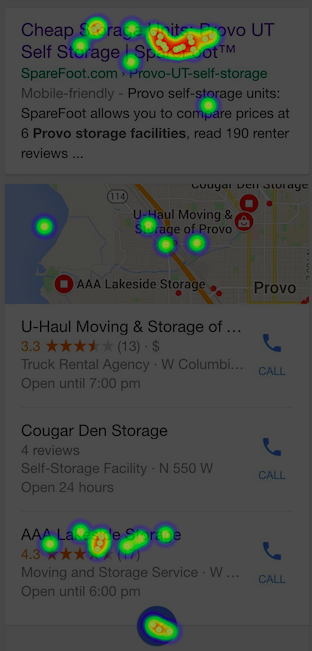
But look at AAA star rating. It’s a full star higher than U-Haul and that seems like the ONLY logical reason for the clicks. U-haul performed a lot better on desktop:
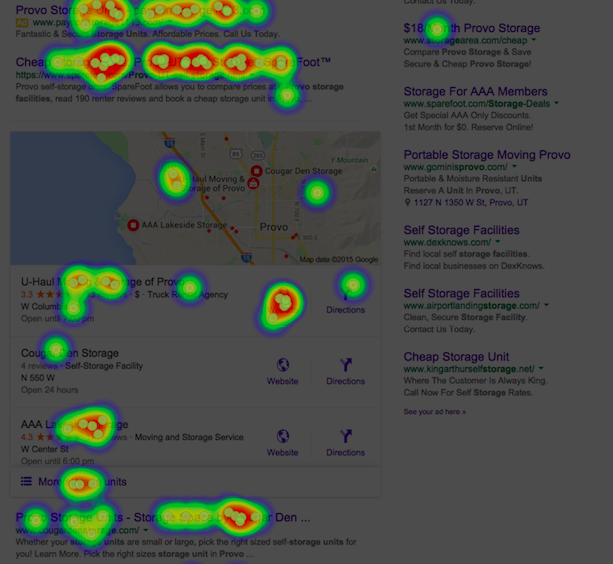
There is definitely a lot more grabbing attention here compared to mobile. It would be interesting to know if reviews pull more attention on mobile than desktop.
3 Listings Is Not a Lot
Getting into the top 7 was hard. 3 is a freaking joke. Yet again, organic first, local pack second. It’s also the number of ads above organic (coincidence or foreshadow), and its the number of paid sponsor test listings in San Fransisco right now.
Study the organic listings that did get clicks
A few things I saw that were interesting:
- “cheap” in title tag or description on the storage unit search phrases performed really well.
- “best” in title tag or description on the law search phrases performed well.
Do your own click studies
While I do believe you can learn a lot from these studies its 3 search phrases across two sizes. I think that every industry and search phrase will have different results. For example:
- Provo Storage paid ads were 42% on mobile
- Boise Lawyer paid ads were 20% on mobile
That is a big difference and if we only looked at one study our data might be way off. Two at least shows the difference and allows you to try and understand why. I use UsabilityHub and love it. It’s why I also love when cool kids like Casey Meraz do their own to compare against as well. Happy clicking.

Mike Ramsey is the founder of Nifty. He is the author of Winning At Local Search and a former partner at LocalU, which provides beginner to advanced conferences in the realm of local search marketing. Mike founded Nifty in 2009 which has been recognized by Inc. as one of the fastest-growing companies in America.
